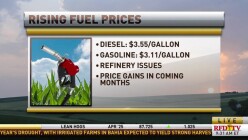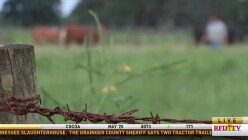Input Costs & Producer Inflation
The top agriculture news headlines from RFD-TV News today (Tuesday, April 1, 2025) and the top trending stories on RFD-TV News.
Here are the top agriculture news headlines from RFD-TV News today (Thursday, March 13, 2025) and the top trending stories on RFD-TV News.
Here are the top agriculture news headlines from RFD-TV News today (Tuesday, March 11, 2025) and the top trending stories on RFD-TV News.
Here are the top agriculture news headlines from RFD-TV News today (Monday, March 10, 2025) and the top trending stories on RFD-TV News.
Here are the top agriculture news headlines from RFD-TV News today (Friday, March 7, 2025) and the top trending stories on RFD-TV News.
“Producers want those options for identification and traceability purposes that they were promised back in 2013, and that’s what made it controversial.”
In today’s Firm to Farm blog post, RFD-TV ag law expert Roger McEowen briefly examines several of the issues that farmers and ranchers face.
Experts: Dairy industry outlook could be improving based on strong butter demand, herd number trends
Falling feed costs and strong demand for butter could be good news for dairy farmers looking to get their finances back on track.
The use of ultrasound may make growing beef more efficient.














